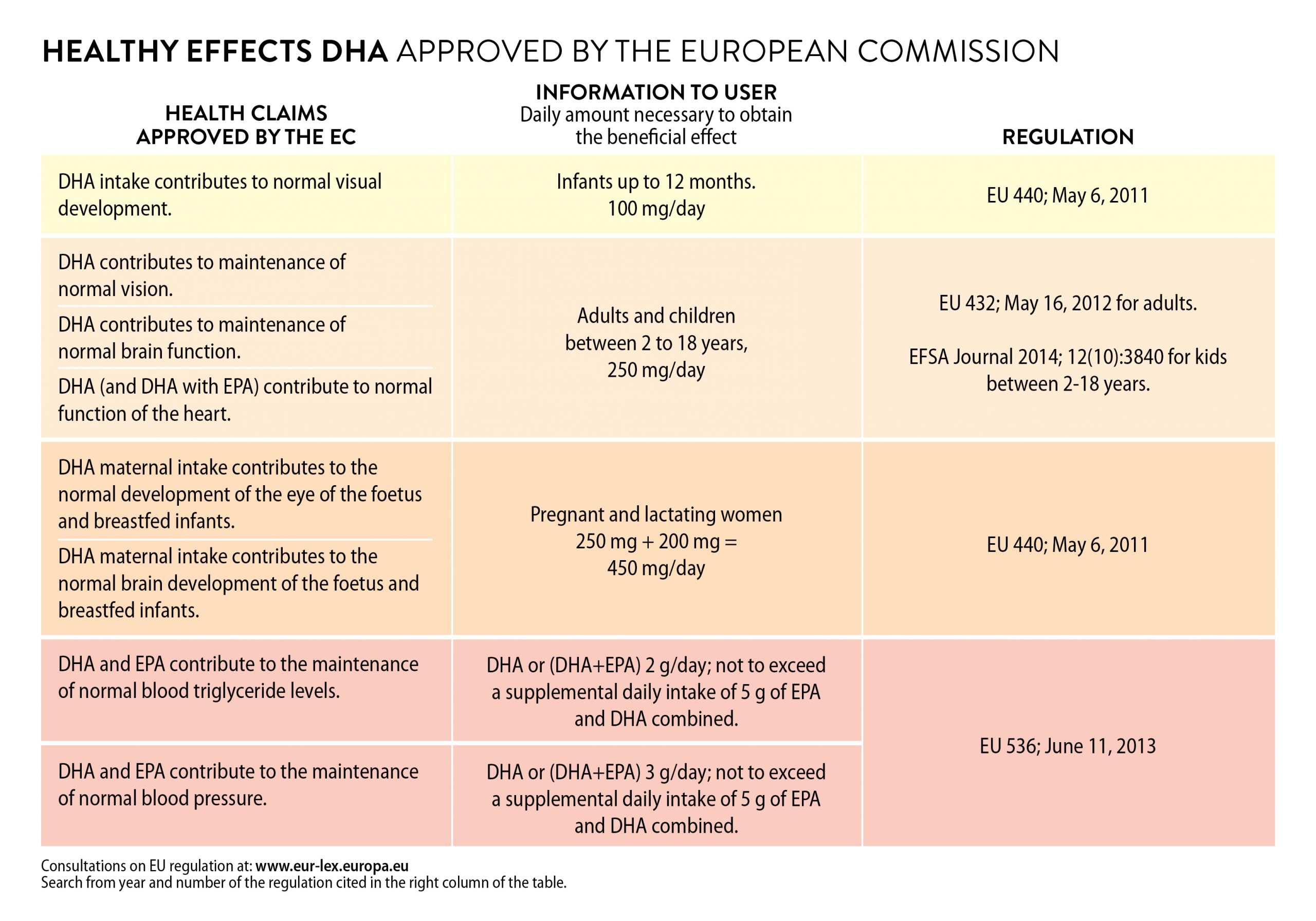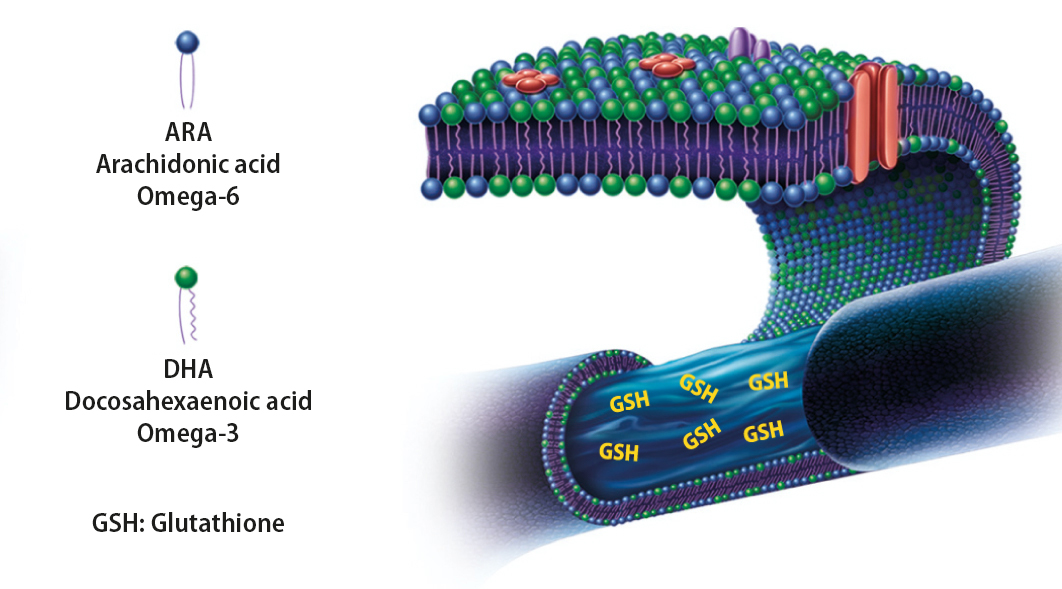DHA IN HUMAN HEALTH
Docosahexaenoic acid (DHA) is a polyunsaturated fatty acid from the family of omega-3 fatty acids, which comes from the marine food chain.
Plankton microalgae are the producers of DHA, and the marine animals that feed on them enrich their tissues with it. Dietary consumption of fish and shellfish is the basic source of DHA for humans.
Humans have great difficulty in obtaining it from the omega-3 precursor present in terrestrial vegetables and seeds, such as alpha-linolenic acid. The lack of certain enzymes in our body makes it difficult for us to obtain it from it and forces us to get it from seafood.
DHA is the most highly concentrated polyunsaturated fatty acid in the membranes of brain neurons and retinal photoreceptors and is essential for proper fetal neurodevelopment and normal human brain and visual function.



